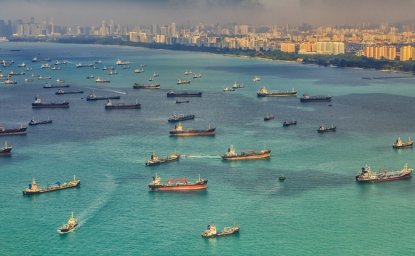For U.S. companies that are already heavily engaged in Asia, the benefits of the Trans-Pacific Partnership (TPP) are, obviously, lower tariffs, higher standards of protection of critical interests (including intellectual property rights), and easier customs processing. What is more, U.S. companies that are the most successful in the Asia-Pacific region are those that are already competitive and are the driving force for future growth, from major manufacturers to service providers. At the same time, the TPP will increase the allure of the United States as a marketplace for Japan, Vietnam, Malaysia, and Singapore as well as Brunei, offering consumers more choices and lower costs.
Rejection of the TPP would stifle U.S. growth in the world’s most populous and economically dynamic region. It will also cost the United States the opportunity to remain a Pacific power at a time when the Asia-Pacific is undergoing significant political, social, and military changes, as well as economic ones. There are already a number of trade deals being negotiated in Asia to which Washington is not a party. The United States, if it loses the current momentum for pushing through the TPP, may find itself excluded from the other Asian trade deals and, more broadly, from regional institution-building.
When Japan declared its intentions to join the TPP in 2013, the deal from then on represented 40 percent of combined global gross domestic product (GDP), with the world’s biggest and third-biggest economies as members. Moreover, given that the United States and Japan do not have a bilateral free trade agreement, the TPP will effectively substitute for one, a boon not only for drug makers, real estate investment, agricultural conglomerates, and technology groups, but also the service sector at large. U.S. auto makers and auto parts companies will face greater competition over time, but may have added export opportunities in Japan at some time in the future. The TPP, in short, is a major free trade agreement as well as the most ambitious multilateral trade deal to date. It will not only give its partners greater access to markets but also standardize rules and regulations to make global trade more efficient.
One of the TPP’s biggest successes so far is that it has brought together a wide array of countries that are keenly aware that greater economic integration cannot be avoided, and that common trade rules on issues such as intellectual property rights (which were not covered by previous agreements) can actually benefit them. Japan’s entry to the TPP elevated the pact from a deal representing just 4 countries (Brunei, Chile, New Zealand, and Singapore), to one encompassing 12 (including the United States, Australia, Canada, and Vietnam), which represent a spectrum of economic stages and political systems.
Japan’s addition to the pact has also changed the mindset of the Chinese authorities, who until then had regarded the TPP as part of a policy to contain China. Now, though, reformists in Beijing are considering joining the pact too, given the economic cost of remaining outside the framework. If China is out of the TPP and stays out, its GDP will falter and will continue to slide as the TPP gains new members. In fact, the TPP can help member countries become less dependent on China by boosting trade among themselves.
If China is out of the TPP and stays out, its GDP will falter and will continue to slide as the TPP gains new members.
Certainly, fears about being excluded from the group and missing out on new opportunities are driving other countries to want to join. South Korea, Thailand, Indonesia, and the Philippines have already expressed interest in joining the TPP, not only to enjoy lower trade tariffs but also to embrace the new international rules and standards that ultimately will make their countries more competitive. Unlike the majority of trade agreements, which are closed, the TPP is an open platform that will allow countries to join even after the agreement is concluded.
The fact that China is contemplating joining the TPP in the future is a tremendous achievement in itself because the TPP covers nontrade issues that are sore points for Beijing. The TPP is the first trade deal in the world to take on environmental protection and health standards as a global issue. It also provides common labor standards and encourages cooperation and capacity building in issues as diverse as disaster risk management and gender equality. By contemplating TPP entry, free trade proponents in China are signaling that they would be prepared to tackle those politically sensitive issues for economic gain. Moreover, in assessing its prospects of entry China also indicates that it is prepared to address the challenges posed in global markets by state-owned enterprises—which come under TPP scrutiny—in hampering fair competition.
China has, however, come up with alternative roadmaps for furthering trade in the region, most notably through the Regional Comprehensive Economic Partnership agreement (RCEP). The United States is not part of RCEP, and Japan is the only major Asian nation that belongs to both the TPP and the RCEP. Critics are quick to point out that the RCEP’s goals are simply about lowering tariffs, and not lowering them by much, rather than taking on issues that drive growth in the 21st century such as intellectual property rights and neglecting environmental and labor considerations. Nevertheless, RCEP has encouraged emerging countries such as Burma, Cambodia, and Laos to take the first steps toward integrating with broader international markets. RCEP should be an entry point for those countries interested in joining the TPP down the line and eventually pursuing greater market liberalization. In short, the TPP is a concrete example of how the United States and the 11 other member countries offer an alternative vision to state-driven capitalism. Without the TPP, there is no further path that the emerging countries can follow.
The TPP provides gains to its members far beyond lower tariffs. It will help protect industrial sectors that will continue to drive growth in the 21st century and ensure that U.S. investment interests are protected in the world’s most populous and economically dynamic region. U.S. rejection of the agreement would be seen as protectionist and isolationist, and would leave only a vacuum in an increasingly globalized world.
The opinions expressed here are solely those of the author.





